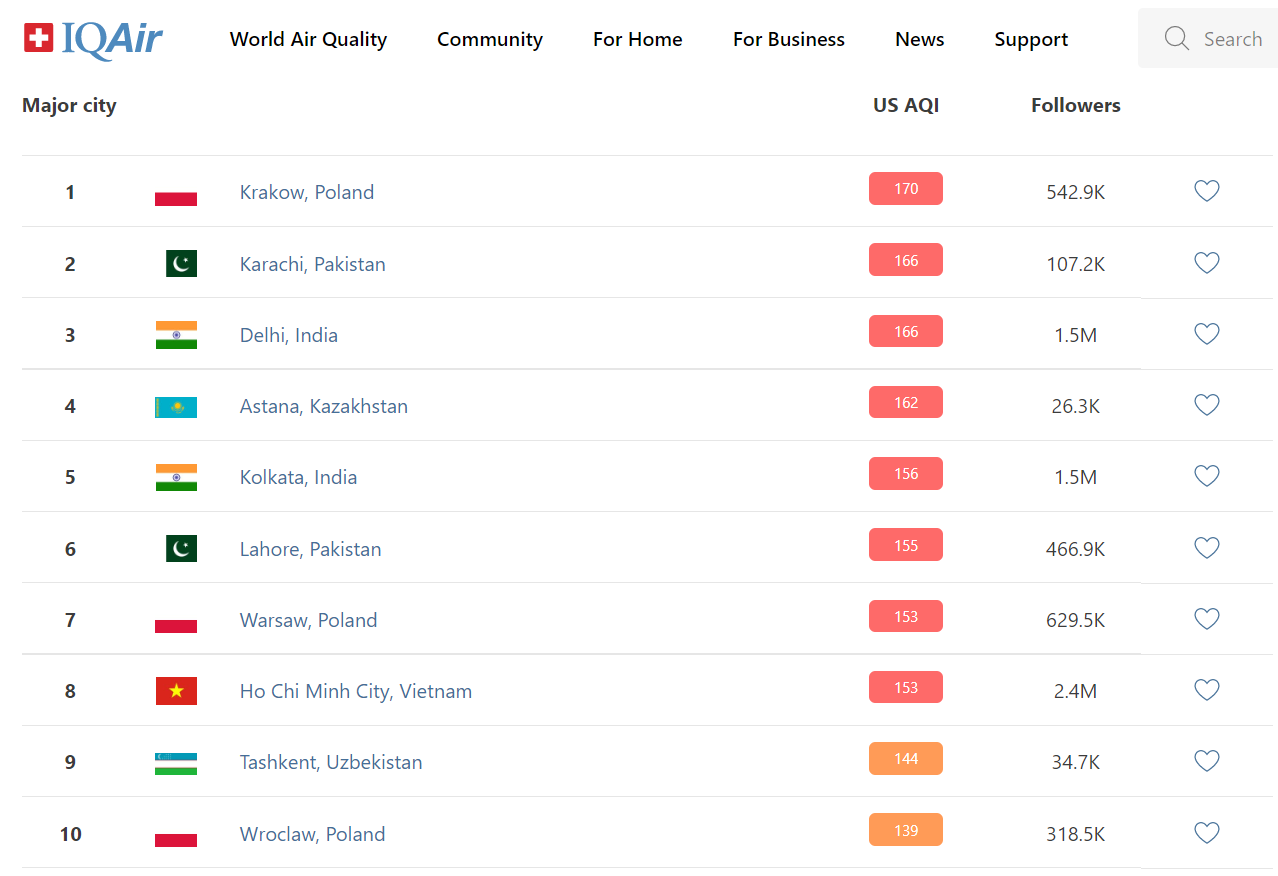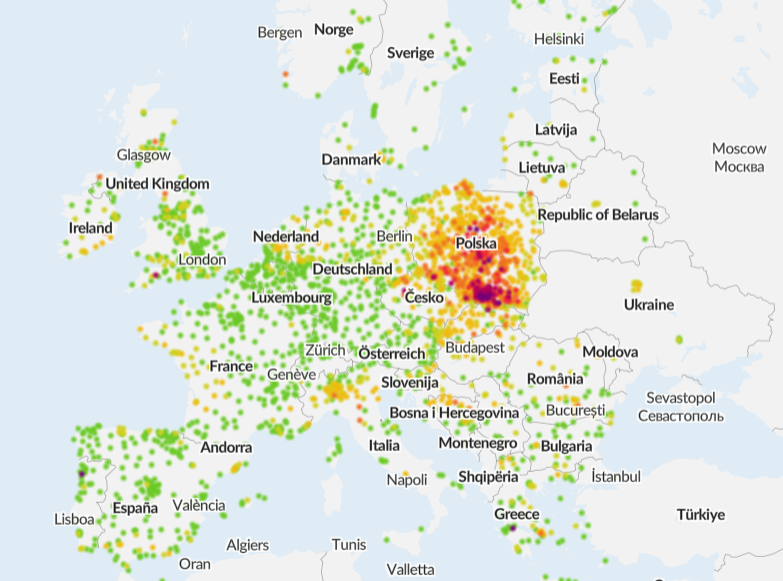The Polish city of Kraków has topped a global air pollution ranking today, with Warsaw and Wrocław also in the top ten, after a cold snap prompted homeowners to burn more coal and other substances for heating, which is the main cause of Poland’s smog.
Poland – where coal generates 70% of electricity and heats around one third of households – is regularly found to have some of Europe’s worst air pollution, resulting in tens of thousands of premature deaths annually.
There have been concerns that this winter could be even worse than usual as the energy crisis may lead to the burning of lower-quality coal and to more people than usual burning illegal materials, such as household waste.
While the autumn has been relatively warm so far, since the middle of last week temperatures have dropped below zero. That has resulted in the level of harmful air particulates caused by home heating rising significantly.
The live air quality map produced by Airly – which uses sensors across Europe – shows Poland, and in particular the south of the country, as a red and purple spot in the middle of a mostly green continent.
This morning, another air-monitoring firm, IQAir, showed that Kraków had the world’s most polluted air among major cities while Warsaw was in seventh place and Wrocław in tenth.
Although Kraków has taken major steps to tackle its air pollution – including banning the burning of coal and wood – settlements in its immediate surroundings do not have such measures in place.

IQAir’s global ranking of the major cities with the worst air quality on the morning of 21 November 2022.
Yesterday, residents of Rybnik and Zabrze, two cities in Poland’s coal heartlands of Silesia, received SMS warnings from the Government Security Centre to “avoid outdoor activities” because harmful air quality levels were forecast. Local authorities also issued air quality warnings in a number of other municipalities.
Monitors in Zabrze this morning showed that the level of PM10 – a harmful type of airborne particulate – was 154 µg/m3, which is around three times the statutory maximum safe level in Poland of 50µg/m3 (with the World Health Organisation recommending a maximum of 45µg/m3).
Meanwhile in Kraków, the level of PM2.5 – another type of particulate – was 800% above the maximum safe level and in Warsaw it was 400% above it, reports news website Wirtualna Polska.
Poland's annual air pollution ranking has been published by @alarm_smogowy, which notes that "the air was unbreathable for 2-3 months of the year" in places on the list.
As before, the worst spots were smaller towns and villages, rather that large cities https://t.co/6nN1owLwWu
— Notes from Poland 🇵🇱 (@notesfrompoland) November 9, 2022
Main image credit: Airly

Daniel Tilles is editor-in-chief of Notes from Poland. He has written on Polish affairs for a wide range of publications, including Foreign Policy, POLITICO Europe, EUobserver and Dziennik Gazeta Prawna.




















